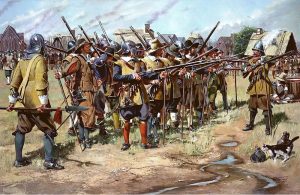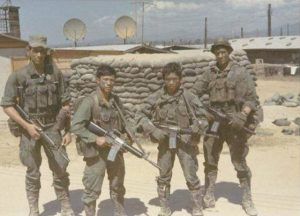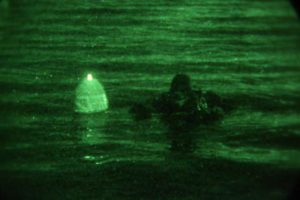
A well regulated Militia, being necessary to the security of a free State, the right of the people to keep and bear Arms, shall not be infringed.
This morning, June 14th, the Supreme Court of the United States overturned the Trump-era ban on “bump stocks” for semi-automatic rifles.
Justifiably, the “Pro-2A Sphere” is rejoicing; predictably, their “anti” opponents are screaming hysterically, crying that there will be “blood in the streets” over letting what amounts to a toy that has never been used in a crime (that’s for an entirely different article). But the real question is: Is this really a victory?
Trump’s decision to push the bump-stock ban was an abject failure of leadership. It was also treasonous, as are every single blanket gun control law, proposed law or regulation, at every level of government and law enforcement in the United States.
Let me explain.
Gun control in the United States has a comparatively short history. Prior to 1934, there were no specific restrictions on firearms at the Federal level. At all. That included owning cannons and other types of artillery, as well as arming private warships, which someone should remind the current occupant of 1600 Pennsylvania Ave about. The few mentions of firearms ownership at the Federal level of law enforcement either specified what weapons every citizen was required to maintain, but also specified – twice – that restrictions on civilian firearms ownership were not simply specifically forbidden, but that firearms ownership in the United States has a specifically military character. Naturally, anti-gun sentiment wants desperately to dismiss or ignore this sentiment. Increasingly – thankfully – these childish views are being dismissed, not only by the Supreme Court, but by lower courts as well, albeit in uneven language.
One recent tack anti-gun promoters have tried to employ is the “well regulated” clause in the 2nd Amendment, weaving the tortuous logic that “well regulated” somehow equates to the Federal Government having the ability to remove firearms from private hands at will. Clearly, these are silly arguments. A far better argument is to point out that “the Militia”, as such, has no ability to either muster or train…and that is absolutely correct. The Presser v. Illinois case cited above specified that the “several states” held the sole authority of managing military affairs within their state boundaries, except when it came to Federal military forces. The caveat to that was that states quickly took that as an excuse to functionally eliminate any requirement within their borders for militia to muster or train. And, at the Federal level, Congress also failed in its enumerated duties, because the 2nd Amendment is not the only place in the Constitution where the word “militia” appears.
In the aftermath of the Spanish-American War of 1898, the United States quickly found itself at war with its erstwhile guerrilla allies in the formerly Spanish-held Philippine Islands. That conflict lasted over three years, and presented a huge issue for the United States in terms of manpower – many of the soldiers enlisted for the war with Spain had enlisted for just that: the duration of war with Spain…no one had said anything about fighting Filipino locals, who had already been fighting the Spanish. Most of those volunteers came close to mutiny if they were not returned to the United States, or enlisted – at exorbitant cash bounties – directly into the Army.
To get around this problem, Congress created the Militia Act of 1903, popularly known as the “Dick Act”. This act created the modern National Guard, as we understand the term. The National Guard is described as forming the “Organized Militia”; in effect, it forms a reserve force for the US Army, which body regulates, arms and trains it, but which the states pay for during peacetime, and which they can use at the discretion of the state government unless the Federal government requires those troops for Federal use.
But back when the Dick Act was passed, there was a provision for “everybody else”: since the “Militia of the United States” defines the “Militia” as all ‘able-bodied males’ between 17 and 45 (unless you’re a veteran of Federal military service – see the link above), the Congress in 1903 lumped “everyone else” into the “Reserve Militia”, which was given a detailed organizational framework. In 1956, however, the “Reserve Militia” disappeared, replaced in the United States Code with the term “Unorganized Militia”…and, by definition, an “unorganized” group can neither muster nor train as a unit – something certain members of Congress are now attempting to formalize in law.
Don’t worry – we’re getting to the treason part, I promise.
The first specific example of Federal-level restrictions on firearms ownership came in 1934, with the “National Firearms Act”, known as NFA’34. This act is why you have to pay an additional $200 tax to buy any kind of automatic weapon (the real ones, not what the mainstream media thinks are ‘machine guns’), explosive device or noise suppressor for a firearm…assuming, of course, that one is willing to go through the byzantine paperwork to become one of a privileged class, who can be arrested at any time, for the slightest infraction.
But, I digress.
The 1934 NFA was, publicly, instituted to make it harder for criminals to obtain automatic weapons – despite those criminals usually stealing them from National Guard armories. In reality, the restrictions were aimed at organized labor, which had been growing increasingly restive during the 1920’s and 30’s, leading inevitably to the 1934 General Strike. The government was desperate to limit the access of unionists to military-grade weapons, and used the phantom of organized crime as an excuse. The National Firearms Act was so incoherent, the Supreme Court of the day actually used language that found against the NFA, while incoherently ruling that the act was, in fact, legal.
Aside from the scare to the federal government caused by the 1946 “Battle of Athens”, there were no real Federal attacks on private firearms ownership until the “Gun Control Act of 1968” (GCA’68) was passed. Prior to GCA’68, a person could order many types of firearms out of most gun and sporting magazines of the time, especially surplus weapons. Any person – including African Americans…more or less anonymously.
While certain parties had been pushing the core of GCA’68 since the assassination of President John F. Kennedy, those parties managed to push it through following the twin assassinations of Martin Luther King and Senator Robert F. Kennedy, D-NY (JFK’s brother), in April and June of 1968, respectively. What GCA’68 did was eliminate the ability of citizens to purchase any weapon directly through the mail, from any source. This is why you, the Reader, have to fill out a government form to legally buy a firearm from a store or a licensed dealer. And – in contravention of the anti-gunners hysterical screams about the supposed ‘power’ of the National Rifle Association (NRA) – that organization, to its eternal shame, happily backed GCA’68 to the hilt.
The excuse given for GCA’68 was, aside from restricting mail order the access to firearms like those used in those assassinations, was to keep weapons out of the hands of dangerous criminals and drug addicts (including modern users of “medical marijuana”)…which is rather odd, considering that without any kind of “instant check system”, no one with a valid identification could be refused a sale, a system which has demonstrated that any database is only as good as its inputs.
Again, this major bill failed to stop any crime – so, why was it passed? Easy: the Black Panthers.
The Black Panther Party (BPP) was formed in 1966, in response to increasing violence by police against black communities around the country…and, despite the pleas of leaders like Dr. King and Malcolm X, the BPP was determined to take a more confrontational approach, with its armed members “monitoring” police stops in black neighborhoods. In response to this, in California, the Mulford Act was proposed, criminalizing the open carry of firearms without a permit. In response to the proposed act, the BPP staged an armed protest on the step of the California State House in Sacramento. Whether this was simply a “publicity stunt” or not, the measure passed decisively, backed by both Republicans and Democrats, again with the full support of the NRA, and was signed into law by then-governor Ronald Reagan (who was no friend of gun owners, despite the misguided beliefs of many).
So. Given the history lesson above, where do I come off, claiming that restrictive gun control is “treasonous”?
Because it is.
Treason in the United States is defined as:
Whoever, owing allegiance to the United States, levies war against them or adheres to their enemies, giving them aid and comfort within the United States or elsewhere, is guilty of treason and shall suffer death, or shall be imprisoned not less than five years and fined under this title but not less than $10,000; and shall be incapable of holding any office under the United States.
The important part, here, is the “adheres to their enemies, giving them aid and comfort within the United States or elsewhere” part. “Giving aid and comfort” can take many forms, but, in light of the fact that blanket restrictions on firearms ownership pointedly weaken, if not eliminate, the ability of the average citizen to not simply protect themselves, but to defend the nation in times of distress. And, given the increasing number of unidentified and unregistered “military-age males” flooding into the United States currently, there is a decidedly high chance that the United States may soon face a wave of Mumbai-scale terrorist attacks, in many cities around the nation.
Should such a wave of attacks ensue, it will be completely and totally the fault of the Democrat Part in general, and the Biden regime, in particular.
The scale of the actions against citizen firearms ownership across the nation, coupled to the flood of illegal aliens, is too extensive to be a simple series of accidents – it is pointedly intentional in nature. It is a direct and immediate threat to the People of the United States, and it needs to be dealt with.
Donald Trump may not be the best candidate for President, and he clearly made serious errors in judgment while in office…but the alternative is a nest of active traitors to the nation.
All I can do is warn you – figure it out.
ADDITIONAL RESOURCES
- Thomas Ricks (2012), The Generals
- James F. Dunnigan (2003), How To Make War, 4th Edition
- James F. Dunnigan (1991), Shooting Blanks








